UFO Watch: 8 Times the Government Looked for Flying Saucers
Sanctioned UFO Searches
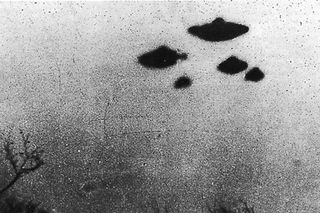
Is the truth really out there? It's an age-old question, with reports of UFOs going back decades. We looked back at actual UFO and alien investigations by the U.S. and other countries. Check it out!
Projects Sign and Grudge – 1948-1951
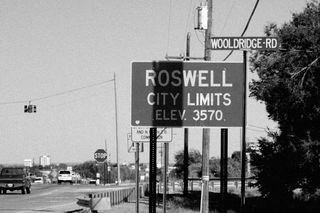
Many accounts of UFOs in the United States describe something called the Roswell incident. Local accounts of a "flying saucer" landing near Roswell, New Mexico, in 1947 led to many alien conspiracy theories, but the U.S. Air Force denied an E.T. connection. In the 1990s, the Air Force said the object was actually a balloon that was searching for Soviet Union nuclear test signals under Project Mogul.
However, the incident did prompt official U.S. investigations into unidentified flying objects in the next few years. A report published for the U.S. Air Force's Project Sign (1948-1949) stated that the things people saw were "real" but that at least "some of the incidents may be caused by natural phenomena" and others may be related to domestic or foreign aircraft. The Air Force's Project Grudge, which issued a report in 1949 prior to its shutdown in 1951, continued the investigation but found no conclusive evidence of UFOs.
Project Blue Book – 1952-1969
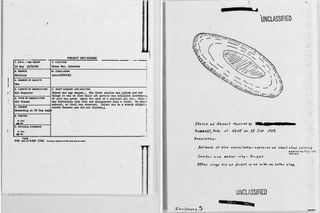
Project Blue Book was yet another program from the U.S. Air Force, following up on Projects Sign and Grudge. The program conducted a series of studies between 1952 and 1969 to figure out if UFOs could hurt national security and to search for UFO data. More than 10,000 of those case files are freely available on the Internet Archive.
According to Encyclopedia Britannica, investigators ultimately collected more than 12,000 sightings and classified them as either "identified" (meaning the events could be explained by astronomical, atmospheric or human phenomena) or "unidentified." That category made up about 6 percent of the total number of reported cases.
The Condon Committee – 1966-1968
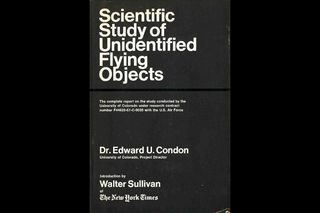
The Condon Committee, more formally known as the University of Colorado UFO Project, was a group funded by the Air Force that looked at UFOs under leadership from physicist Edward Condon. The group re-examined the information from Project Blue Book and published its efforts in the "Scientific Study of Unidentified Flying Objects" (also known as the Condon Report) in 1968.
According to How Stuff Works, the Condon Report found that about one-third of the cases couldn't be explained, even though the introduction stated that "further extensive study of UFOs probably cannot be justified on the expectation that science will be advanced thereby."
Some reports say that the ultimate purpose of the report was to stop U.S. investigations into UFOs. Whether or not that was true, Blue Book ceased operations in 1969, the year after the Condon Report was released.
Project Ozma – 1960
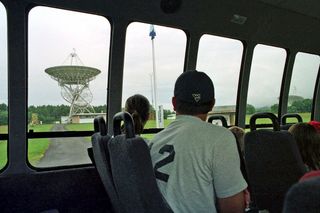
Project Ozma stands out because it was the first time humans tried to look for radio signals from outside of the solar system. (It was named after the imaginary land of Oz in the 1900 book "The Wonderful Wizard of Oz" and the 1939 film "The Wizard of Oz.") Funding came from the National Science Foundation.
According to the SETI Institute, for this project, radio astronomer Frank Drake chose to examine the stars Tau Ceti in the constellation Cetus (the Whale) and Epsilon Eridani in the constellation Eridanus (the River). These stars were monitored at the 21-centimeter (8.3 inches) emission line for 6 hours a day, from April to July 1960. No signal was found, except for "an early false alarm caused by a secret military experiment," the SETI Institute stated.
NASA's SETI – 1970s-1993
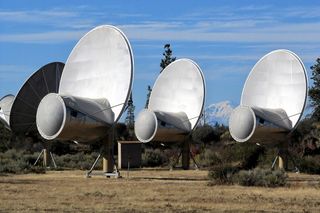
SETI is a term for a group of researchers who participate in the search for extraterrestrial intelligence. NASA conducted SETI searches using the Arecibo and Goldstone antennas starting in the 1970s. The program was canceled in 1993, shortly after observations officially started. (NASA renamed the program the High Resolution Microwave Survey program late in its existence, which some say was done to mask that it was actually a SETI program.)
However, SETI searches still exist informally at universities around the world. The SETI Institute in California was founded in 1984 and uses private funding. In 2007, the Allen Telescope Array, which is devoted to observations from the SETI Institute, opened with the help of funding from Microsoft co-founder Paul Allen. It continues observations to this day.
NASA Astrobiology Institute – 1998-present
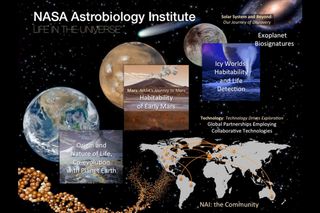
While astrobiology doesn't focus on UFOs, it does examine under what circumstances life, from microbial to intelligent, could arise. The NASA Astrobiology Institute (NAI) seeks to encourage researchers to collaborate across disciplines to answer a range of questions: Is life possible on icy moons? What kind of microbes could survive the extreme conditions of Mars? What is the habitable zone of a star?
NAI is only one of six branches of NASA's astrobiology program. The rest are called the Exobiology and Evolutionary Biology Program, Planetary Science and Technology Through Analog Research, the Planetary Instrument Concepts for the Advancement of Solar System Observations (PICASSO), the Maturation of Instruments for Solar System Exploration (MatISSE), and the Habitable Worlds Program.
Advanced Aviation Threat Identification Program - 2007-2012
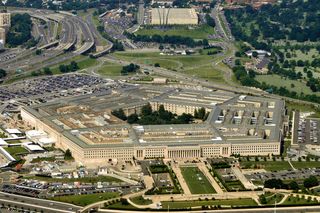
In December 2017, the U.S. government's research into UFOs received global attention when reports emerged of a secret Department of Defense program (called the Advanced Aviation Threat Identification Program, or AATIP) that ran from at least 2007 to 2012. The program tracked reports of UFOs, including descriptions of some strange aerial activities that two Navy pilots said they saw in 2004. Luis Elizondo, the former head of the program, told several media outlets that we may not be alone.
AATIP is only the most recent example in decades of work by the U.S. government looking into the unexplained.
Other U.S. and international investigations
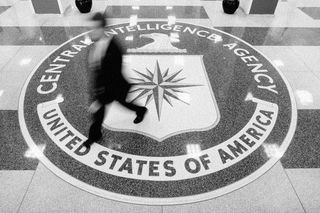
The CIA released a bunch of previously classified documents in 2016 pertaining to weird UFO encounters, and there is an entire web page devoted to the agency's investigations between 1949 and 1990.
If that's not enough to satisfy your UFO appetite, you can look at unclassified documents from the National Security Agency and the Federal Bureau of Investigation. Other government agencies reportedly have files as well, such as the Defense Intelligence Agency.
For international efforts, Emma Best (who publishes regularly on the government-transparency website MuckRock) has requested thousands of pages of U.S. government documents under the Freedom of Information Act. Her website alone — which claims it has the largest collection of UFO-related documents in the world — lists files from governments from all over the world, including Australia, Brazil, Britain, Canada, Denmark, France, New Zealand, Panama and Spain. (Other governments that were listed, but with no uploaded files on this site, included Ecuador, Norway, Portugal, Sweden, Switzerland and Uruguay.)
Join our Space Forums to keep talking space on the latest missions, night sky and more! And if you have a news tip, correction or comment, let us know at: community@space.com.
Get the Space.com Newsletter
Breaking space news, the latest updates on rocket launches, skywatching events and more!

Elizabeth Howell (she/her), Ph.D., was a staff writer in the spaceflight channel between 2022 and 2024 specializing in Canadian space news. She was contributing writer for Space.com for 10 years from 2012 to 2024. Elizabeth's reporting includes multiple exclusives with the White House, leading world coverage about a lost-and-found space tomato on the International Space Station, witnessing five human spaceflight launches on two continents, flying parabolic, working inside a spacesuit, and participating in a simulated Mars mission. Her latest book, "Why Am I Taller?" (ECW Press, 2022) is co-written with astronaut Dave Williams.


